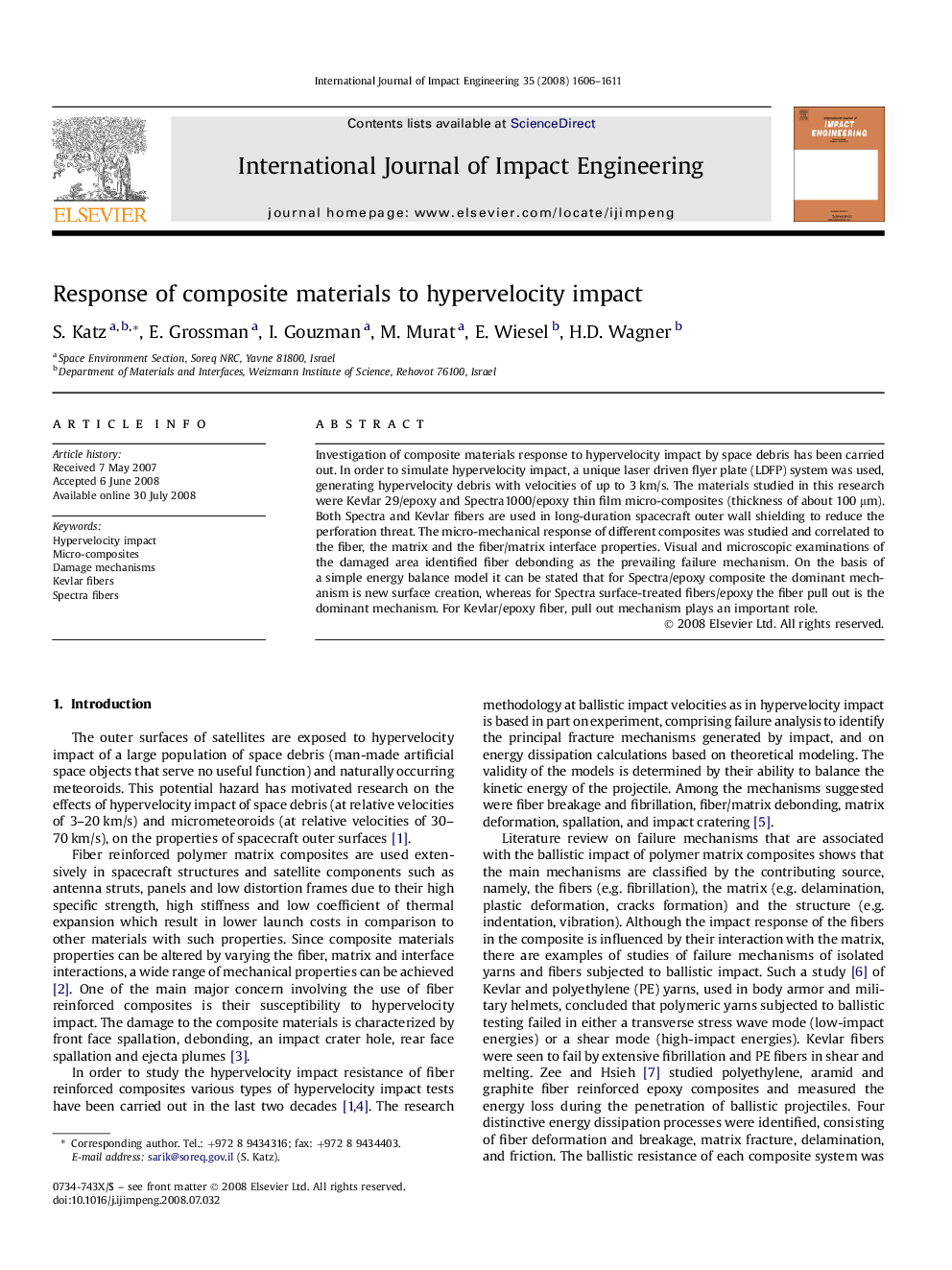| کد مقاله | کد نشریه | سال انتشار | مقاله انگلیسی | نسخه تمام متن |
|---|---|---|---|---|
| 779476 | 1464145 | 2008 | 6 صفحه PDF | دانلود رایگان |

Investigation of composite materials response to hypervelocity impact by space debris has been carried out. In order to simulate hypervelocity impact, a unique laser driven flyer plate (LDFP) system was used, generating hypervelocity debris with velocities of up to 3 km/s. The materials studied in this research were Kevlar 29/epoxy and Spectra1000/epoxy thin film micro-composites (thickness of about 100 μm). Both Spectra and Kevlar fibers are used in long-duration spacecraft outer wall shielding to reduce the perforation threat. The micro-mechanical response of different composites was studied and correlated to the fiber, the matrix and the fiber/matrix interface properties. Visual and microscopic examinations of the damaged area identified fiber debonding as the prevailing failure mechanism. On the basis of a simple energy balance model it can be stated that for Spectra/epoxy composite the dominant mechanism is new surface creation, whereas for Spectra surface-treated fibers/epoxy the fiber pull out is the dominant mechanism. For Kevlar/epoxy fiber, pull out mechanism plays an important role.
Journal: International Journal of Impact Engineering - Volume 35, Issue 12, December 2008, Pages 1606–1611